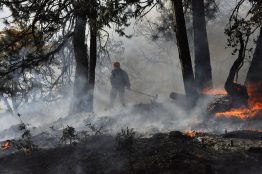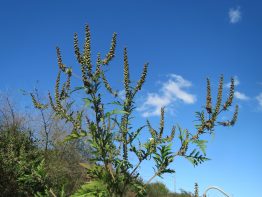UW College of the Environment and Seattle visual analytics company Tableau Software teamed up to create a new, interactive visualization for historical observations of temperature and precipitation in Washington, Oregon, Idaho and western Montana, and for Washington snowpack. The free online tool lets anybody interact with the records going back as far as 1881 and look for significant trends. “This tool lets anyone, from researchers to meteorologists to members of the public, look at the actual data to motivate why we should care about our climate changing, and see how it is changing in our own backyard,” said project lead Karin Bumbaco, the assistant state climatologist for Washington.
Read more at UW Today »New resources support tribes in preparing for climate change
As the natural world responds to climate change, American Indian tribes across the country are grappling with how to plan for a future that balances inevitable change with protecting the resources vital to their cultural traditions. The University of Washington Climate Impacts Group and regional tribal partners have developed a collection of resources that may be useful to tribes at any stage in the process of evaluating their vulnerability to climate change.
Read more at UW Today »First tally of U.S.-Russia polar bears finds a healthy population
Not all polar bears are in the same dire situation due to retreating sea ice, at least not right now. Off the western coast of Alaska, the Chukchi Sea is rich in marine life, but the number of polar bears in the area had never been counted. The first formal study of this population suggests that it’s been healthy and relatively abundant in recent years, numbering about 3,000 animals.
Read more at UW Today »Common allergen, ragweed, will shift northward under climate change
New research from the University of Washington and the University of Massachusetts – Amherst looks at how the most common cause of sneezing and sniffling in North America is likely to shift under climate change. A recent study published in the open-access journal PLOS ONE finds that common ragweed will expand its range northward as the climate warms, reaching places including New York, Vermont, New Hampshire, and Maine, while retreating from some current hot spots.
Read more at UW Today »University of Washington announces new marine biology major
The bachelor of science from UW Environment launched in autumn 2018.
Visit the Marine Biology website »





